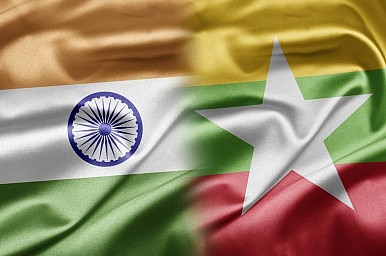
Revolutionizing Taiwan’s Security: Leveraging C4ISR for traditional and non-traditional challenges
February 19, 2010
China Taking the Lead in Global Shipbuilding
March 2, 2010By: Project 2049 Institute |
“We hope to have, in the next few weeks, a joint security operation against the Northeast Indian rebels having bases in Myanmarâ€, Indian Home Secretary GK Pillai boasted after concluding a high-level meeting with the military junta last month.
Should this rhetoric crystallize into reality, it would be a huge boost for India’s crackdown on the several rebel groups waging decades-old independence campaigns against it. Groups such as the Manipuri People’s Liberation Front (MPLF) and the Assamese United Liberation Front (ULFA) have exploited northwestern Burma, along with Bhutan and Bangladesh, as safe havens since the 1970s. But their reach has eroded in recent years, fueled by crackdowns by Thimphu and Dhaka as well as internal fissures over whether to pursue reconciliation with New Delhi. India now hopes that the loss of Burma, a key training ground and a strategic conduit for illicit Chinese-made arms, could finally break the back of the rebels.
The odds of Burma lifting a finger to weed out the nettlesome rebels, however, are slim. Its Deputy Minister for Home Affairs, Brigadier-General Phone Swe, has allegedly promised a joint operation soon in the Kachin state of northwestern Burma. But that vague assurance seems eerily similar to previous pledges, often secured through a flood of Indian cash, infrastructure and arms, which have resulted in only half-hearted and enfeebled efforts by Naypyidaw.
Prospects for a sudden change of heart over the next few months are dim. The junta is too preoccupied with reining in insurgent groups in the east and north of the country ahead of this year’s upcoming elections to fret about Indian rebels in the northwest. Logistically speaking, the terrain there is rough, and Burmese military presence weak, mainly because resistance groups there only number in the low hundreds. And it is unlikely that a regime fighting for its survival will marshal its limited resources against a force that does not threaten its territorial integrity. Local Burmese military officials also receive monthly payments from the rebel groups to turn a blind eye to their presence, and will be hesitant to slay their golden goose.
Indian officials claim that “the body language†of Burma’s generals was “much more positive†than in the past. But no changes in mannerism or gesture can alter simple political realities. India has little leverage on Burma since it must continue to invest there in order to balance growing Chinese influence, and New Delhi needs the junta to remove a bone in its throat that is of little concern in Naypyidaw. India is beginning to grasp this, and has tried to coax the rebels into political settlements while shoring up its own military capabilities. That might be a better bet than hoping for coordinated counterinsurgency campaigns with Burma.




